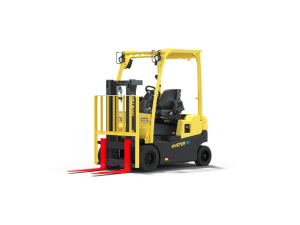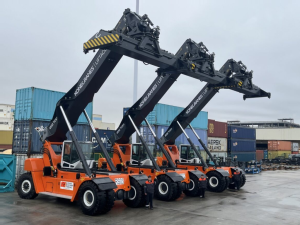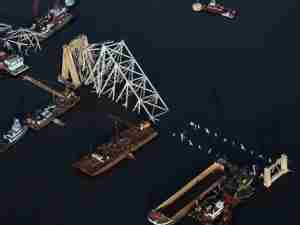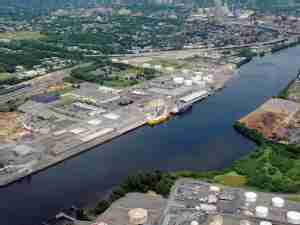The Long Beach Board of Harbor Commissioners unanimously approved an exhaustive environmental study of the Middle Harbor Redevelopment project, green-lighting a $750 million renovation to transform two aging Port of Long Beach shipping terminals into one of the "greenest," most environmentally friendly terminals in the world.
With a significant addition of railroad tracks and built-in environmental technology, the new terminal will double the cargo-moving capacity of the two existing facilities while cutting in half air pollution from operations there. Construction on the project could begin by the end of this year and will take 10 years to complete.
Following a six-hour meeting that included public comment from nearly 60 speakers, the Harbor Commission's 5-0 vote certified the 1,500-page environmental impact report/environmental impact study, and approved the permits and other documents to allow construction to begin. The project will generate as many as 1,000 construction jobs a year, as well as 14,000 jobs in the goods-movement industry region wide.
"This is a chance to move these two terminals into the modern era, into the container shipping industry's greener and more business-friendly future. We can let them age in place and continue to pollute at today's levels and create no additional jobs, or we can approve this EIR and put firms to work immediately," said James C. Hankla, President of the Long Beach Board of Harbor Commissioners. "These two shipping terminals are among the oldest in the Port; they must be modernized and improved."
Construction will be phased in, allowing cargo operations to continue at the two terminals, Long Beach Container Terminal and California United Terminals. A major feature of the project will be to add 65,000 feet of railroad track, which will allow nearly one-third of all the cargo at Middle Harbor to be moved by train, taking trucks off the road. The project would create a single 345-acre facility by merging the existing terminals and adding 51 acres of land by filling in slips.
Environmental technology and practices that reduce or control air pollution are a major benefit of the project, which will create one of the most advanced terminals in the world.
For example:
- All container cargo vessels calling at the terminal will plug into shore-side electricity and turn off their main and auxiliary engines.
- All vessels will adhere to our Vessel Speed Reduction Program, which will cut their fuel consumption and reduce their exhaust emissions from 40 miles offshore.
- All vessels will use clean-burning, low-sulfur fuels in their main and auxiliary engines.
- All cargo-handling equipment at the terminal will be the cleanest available.
- All trucks calling at the terminal will meet the toughest EPA emission standards.
- Finally, rail yard operations will use alternative fuels and the cleanest equipment available.
While the Middle Harbor Redevelopment project includes features that reduce project-specific emissions, there are cumulative impacts from overall Port operations. Approval of the Middle Harbor Redevelopment project will provide $15 million for the Port's new program to make grants to address community air quality and greenhouse gas impacts. Grants will be provided for proposals that protect the health of children and seniors at schools and health-care facilities near the Port. The grant program will also provide funding for health screening and education in the affected area.
The Middle Harbor Redevelopment draft environmental impact report was released in May 2008, and underwent a 75-day public comment period. The final EIR, approved last week, incorporates the comments and the Port's responses to those comments.









